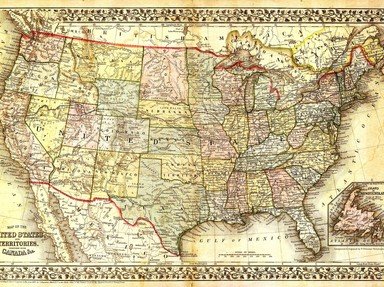Quiz Answer Key and Fun Facts
1. Which city was the focus of a border dispute between Ohio and one of its neighbors in 1835?
2. Georgia and Tennessee have had an ongoing conflict with each other regarding what kind of natural resource?
3. What was the name of a proposed state that would have included several counties from both northern California and southern Oregon?
4. Which of the followings islands was the subject of a border dispute in 1998 between the states of New York and New Jersey?
5. Which U.S. senator was responsible for drafting the Kansas-Nebraska Act which sparked the Bleeding Kansas incident?
6. Which two bordering U.S. states did the infamous Hatfield and McCoy families come from?
7. Which of these was a border dispute between the Iowa Territory and the State of Missouri in 1839?
8. The Pennamite-Yankee Wars were a series of territorial disputes between Pennsylvania and which other colony/state?
9. On which date was the Dakota Territory split up and admitted as two separate states?
10. South Carolina was the first state to secede from the U.S. prior to the Civil War. Which state was the last to secede?
Source: Author
RedHook13
This quiz was reviewed by FunTrivia editor
gtho4 before going online.
Any errors found in FunTrivia content are routinely corrected through our feedback system.
